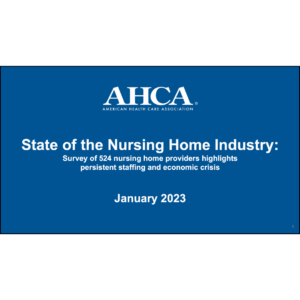New Report Highlights the Growing Importance of Alzheimer’s Care
The Alzheimer’s Association has released the 2023 edition of its annual Alzheimer’s Disease Facts and Figures report, drawing attention to the growing number of people diagnosed with Alzheimer’s and how their care needs impact caregivers, the government, and our healthcare system. The report also identifies both obstacles and opportunities in providing better care to people with Alzheimer’s.
The Prevalence of Alzheimer’s Disease
 According to the report, an estimated 6.7 million Americans currently live with Alzheimer’s disease. About 1 in 9 of those aged 65 and older have Alzheimer’s, and that percentage increases with age.
According to the report, an estimated 6.7 million Americans currently live with Alzheimer’s disease. About 1 in 9 of those aged 65 and older have Alzheimer’s, and that percentage increases with age.
Since the population of Americans aged 65 and older is estimated to grow from 58 million in 2021 to 88 million by 2050, the percentage of Americans with Alzheimer’s is expected to grow significantly, too. The report projects that by 2030, 8.5 million Americans aged 65 and older will have Alzheimer’s, and by 2040, that figure will have grown to 11.2 million. By 2060, as many as 13.8 million Americans aged 65 and older could have Alzheimer’s.
At this time, it is unknown how COVID-19 will impact the incidence of Alzheimer’s.
Caregiving for Those with Dementia
The report highlights the tremendous cost of caring for those with dementia. More than 11 million Americans are unpaid caregivers for a family member or friend with dementia. That free care is valued at nearly $340 billion.
This kind of caregiving comes with significant stress. Fifty-nine percent of caregivers reported very high emotional stress due to caregiving, and 38% reported very high physical stress due to caregiving. The report notes that family caregivers experience mixed emotional and psychological effects when admitting a relative to a residential care facility. Some studies found that caregiver distress decreases after the admission, while other studies found that distress is unchanged or even increases for some caregivers after a loved one is admitted to a care facility.
The Need for a Care Workforce
The growing population living with dementia means a significant increase in demand for direct care workers. The report predicts that between 2020 and 2030, an additional 1.2 million direct care workers will be needed to help care for those living with dementia and Alzheimer’s disease. Reported turnover rates are 99% for nursing assistants in nursing homes.
Personal care job growth is projected to grow at varying rates in different states from 2020 to 2030. States including Arizona (61.5%), Nevada (50.7%), Tennessee (42.2%), and Georgia (37%) are projected to experience the highest job growth rates.
The report poses several solutions to help expand the direct care workforce. It highlights the importance of providing targeted dementia training throughout the healthcare workforce, and notes that it’s essential to expand the range of healthcare professionals who are trained to notice symptoms, screen patients, and refer patients to healthcare professionals for dementia assessment.
Creating new dementia care roles is also important in supporting the growing need for dementia care. The report references the Dementia Care Specialist program in California, in which care managers are trained to provide care coordination for people living with dementia and their families.
Technology advancements can also be leveraged to support the direct care workforce. For example, e-learning programs can provide increased access to dementia care training, and telephone-and internet-based care delivery systems can help improve access to dementia care services for people in rural communities or with mobility challenges.
Additional Report Highlights
This report provides a comprehensive and highly detailed look at other factors, too, including the economic cost of caring for people with Alzheimer’s, the patient journey, new treatments, and trends in dementia caregiving. It also includes important insights for the senior care industry, particularly for organizations that care for residents with Alzheimer’s. With the number of people aged 65 and older set to increase in the coming decades, now is the time for senior care organizations to focus on how they can help meet the increased care needs.

Paige Cerulli is a contributing writer to i Advance Senior Care.
Related Articles
Topics: Alzheimer's/Dementia , Facility management , Featured Articles , Operations











